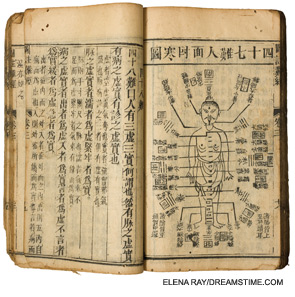Expectation of benefit plays an important role in the efficacy of placebo treatments. A number of acupuncture trials revealed a correlation between patients’ pretrial expectations of benefit and outcomes.20,23-26 For example, in four trials of TCA and sham acupuncture for migraine, headache, chronic low back pain, and OA of the knee, patients were asked at baseline whether they considered acupuncture to be an effective treatment and what they expected from the treatment.24 Patients with high expectations had better outcomes (see Figure 4). Manipulation of pretreatment expectancy by investigators enhanced the analgesia produced by TCA and sham acupuncture.27 Although patients with high expectations exhibited comparable analgesia from TCA and sham acupuncture, TCA produced a greater functional magnetic resonance imaging (fMRI) signal decrease in pain-related brain regions.28

fMRI has been used to analyze changes in brain function associated with pain and its modulation. In a review of the neural correlates of acupuncture and placebos, Dhond et al noted that, “acupuncture modulates a widely distributed network of brain regions also involved in pain perception.”29 The networks modulated by placebos and acupuncture demonstrate overlap and some differences. A number of trials have used fMRI and positron emission tomography (PET) scanning to compare the effects of TCA and sham acupuncture on brain function.19-21,29 In general, there were similarities in the changes in signals produced by both types of procedures, such as decreased signals from pain-related brain regions, but there were also significant differences. The differences between trials may result from methodological problems, including heterogeneity of the populations studied (i.e., experimental pain and patients with chronic pain syndromes) and in the variety of sham acupuncture procedures employed.30 In addition, the reproducibility of acupuncture-induced fMRI patterns needs to be established. When Kong et al retested six subjects six times, they noted a relatively large variability between different sessions.31 Some studies also noted a lack of correlation between the magnitude of change in signals and the extent of relief from pain.32 In summary, although imaging techniques provide insights into the neurobiology of pain, at present these data allow no conclusions as to whether acupuncture analgesia is a placebo effect.
The efficacy of sham procedures has led some acupuncturists to suggest that because sham manipulations have physiologic effects, they are not placebos.33,34 The argument that any treatment producing physiologic effects is not a placebo is untenable because it ignores the vast literature concerning the physiological effects of placebos and mind–body interactions.19-22

Is acupuncture analgesia a placebo effect? A definitive answer to that question awaits further elucidation of the mechanisms of acupuncture and placebo effects. Current evidence indicates that most of the benefits of acupuncture for pain syndromes result from the treatment ritual and patient–provider interaction, which meets the definition of a placebo effect.14-16,19,20,35
Counseling Patients
If relief of pain provided by acupuncture is a contextual or placebo effect, counseling patients requires consideration of the following issues: 1) How effective is the treatment? 2) What are its adverse effects? 3) How much does it cost? and 4) Is it ethical to recommend a placebo treatment without disclosure? (Table 3 summarizes some points to consider when counseling patients about acupuncture.)

